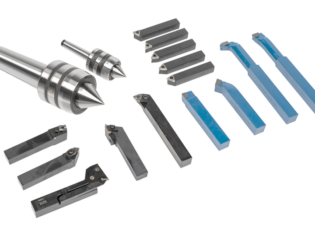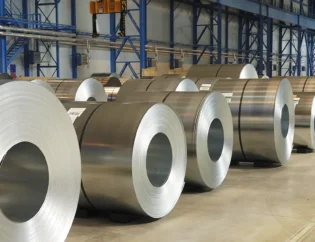Sheet metal stamping is a vital manufacturing process that transforms flat metal sheets into intricate shapes and components. This technique is widely used across various industries, including automotive, aerospace, and electronics, due to its efficiency and precision. Understanding the fundamentals of sheet metal stamping is essential for engineers, designers, and manufacturers aiming to optimize production and enhance product quality.
In this comprehensive guide, readers will explore the various aspects of sheet metal stamping, including the types of stamping processes, tools, and materials involved. We will delve into the design considerations that impact the stamping process, ensuring that you grasp the critical factors that influence efficiency and cost-effectiveness.
Additionally, the guide will cover best practices for troubleshooting common issues encountered during stamping operations. By the end of this guide, readers will be equipped with the knowledge to make informed decisions and implement effective strategies in their sheet metal stamping projects.
Comprehensive Guide to Sheet Metal Stamping
Sheet metal stamping is a highly efficient process that transforms flat metal sheets or coils into various shapes and components, essential for producing precise parts across many industries. This manufacturing technique is pivotal in creating everything from automotive components to household appliances, showcasing its versatility and importance in modern production.
Technical Features of Sheet Metal Stamping
Sheet metal stamping involves several technical features that enhance its efficiency and effectiveness. Below is a comparison table highlighting these features:
| Feature | Description | Benefits |
|---|---|---|
| Precision | High accuracy in shaping metal parts using dies and presses. | Ensures components meet strict tolerances. |
| Speed | Rapid production cycles due to automated processes. | Reduces lead times and increases output. |
| Material Efficiency | Minimal waste generated during the stamping process. | Lowers material costs and environmental impact. |
| Versatility | Ability to work with various metals, including aluminum, steel, and copper. | Adapts to diverse industry needs. |
| Complex Geometries | Capable of producing intricate shapes and designs. | Meets the demands of advanced applications. |
| Cost-Effectiveness | Economical for large-scale production due to automation. | Reduces overall manufacturing costs. |
Types of Sheet Metal Stamping
There are several types of sheet metal stamping processes, each suited for different applications and requirements. The following table outlines the main types and their characteristics:
| Type | Description | Applications |
|---|---|---|
| Progressive Stamping | Involves multiple operations in a single press stroke, moving the metal through various stations. | High-volume production of complex parts. |
| Deep Drawing | Pulls a sheet metal blank into a die to create deep, hollow shapes. | Used for making components like sinks and tanks. |
| Blanking | Cuts out shapes from a metal sheet, producing blanks for further processing. | Initial step in creating parts for various uses. |
| Piercing | Creates holes in the metal sheet, retaining the surrounding material. | Used for ventilation and attachment points. |
| Bending | Deforms the metal to achieve specific angles or curves. | Essential for brackets and enclosures. |
| Four-Slide Stamping | Utilizes multiple slides to perform several operations simultaneously. | Ideal for intricate parts with multiple bends. |
The Sheet Metal Stamping Process
The sheet metal stamping process consists of several stages, each critical to ensuring the final product meets quality standards. Here’s a breakdown of the key stages:
-
Design and Tooling Preparation: The process begins with meticulous design using CAD software, where the desired part geometry is planned. Tooling is fabricated to ensure proper material flow and support during stamping.
-
Material Preparation: Selecting the right metal sheets or coils is crucial. The chosen materials undergo cutting, slitting, and leveling to achieve the correct dimensions and flatness.
-
Feeding Mechanism: Automated feeding systems introduce the prepared metal sheets into the stamping press, ensuring precise positioning for accurate stamping.
-
Stamping Operations: The stamping press applies force to shape the metal according to the die contours. Various operations, such as blanking, bending, and drawing, are performed sequentially or simultaneously.
-
Quality Control: Throughout the stamping process, quality control measures are implemented to ensure that parts meet specified tolerances and quality standards.
-
Finishing and Post-Processing: After stamping, additional steps like deburring, cleaning, and surface treatment may be applied to enhance the appearance and functionality of the stamped parts.
Applications of Sheet Metal Stamping
Sheet metal stamping is widely used across various industries due to its versatility and efficiency. Here are some key applications:
– Automotive Industry: Produces components like body panels, brackets, and engine parts, ensuring lightweight and durable designs that meet safety standards.
– Aerospace Sector: Creates structural parts and fittings, contributing to lightweight designs that enhance fuel efficiency and performance.
– Electronics Industry: Fabricates precise components such as connectors and heat sinks, ensuring reliability in electronic devices.
– Household Appliances: Used in manufacturing components for refrigerators, washing machines, and HVAC systems, providing durability and efficiency.
– Medical Equipment: Produces surgical instruments and medical device components, ensuring high accuracy and cleanliness.
Conclusion
Sheet metal stamping is an integral part of modern manufacturing, offering precision, efficiency, and versatility across various industries. With advancements in technology and techniques, this process continues to evolve, meeting the demands of complex designs and high-volume production. Companies like Zemetal, Aranda Tooling, The Engineering Choice, National Material, and MFG Shop are at the forefront of this industry, providing innovative solutions to meet diverse manufacturing needs.
FAQs
Related Video
What is sheet metal stamping?
Sheet metal stamping is a manufacturing process that transforms flat metal sheets into specific shapes and components using dies and presses.
What are the main types of sheet metal stamping?
The main types include progressive stamping, deep drawing, blanking, piercing, bending, and four-slide stamping, each suited for different applications.
What materials are commonly used in sheet metal stamping?
Common materials include aluminum, stainless steel, low carbon steel, copper, brass, and special alloys, chosen based on their properties and application requirements.
What are the advantages of sheet metal stamping?
Advantages include high precision, speed, material efficiency, versatility, cost-effectiveness, and the ability to produce complex geometries.
What industries utilize sheet metal stamping?
Industries include automotive, aerospace, electronics, household appliances, medical equipment, and telecommunications, among others.







